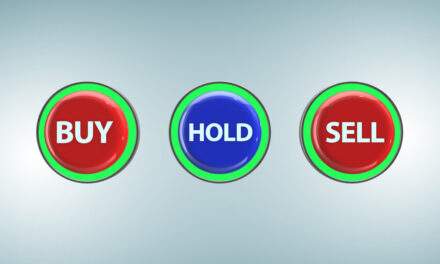Short-term trades can deliver massive gains. I wrote about that and the huge advantage of short-term trading last week.
Yet many investors are reluctant to actively trade. Instead, they joined the “buy and hold” cult.
Now, I understand the hesitation to trade. Buy and hold can also deliver significant gains in the long-run. The problem is, however, that those gains come with large risks.
Buy and hold is one of the riskiest strategies in existence. Let’s say you were invested in index funds in early 2008 and planned to retire in a few months. Over the next year, you lost more than half your nest egg during the financial crash. It would take more than a decade for you to recover.
That’s just one example. Bear markets are always unexpected and destructive to retirement plans.
That risk is why many investors switch some of their portfolio to bonds as they near retirement. That was a great strategy for most of the last 50 years. Bond prices increased as interest rates fell.
Now with interest rates more likely to rise than fall over the next few decades, today’s bonds are riskier. A common investing tactic that worked well in the past has turned into a shaky bet in this environment.
But don’t worry. I’m not here to just list problems. I have a practical solution that could help you beat the market and slash a big chunk of the risk that comes with holding.
The Trick to Securing Large Gains With Low Risk
Certain stocks are the best choice for the long-run. You may not realize it, but active trading is also a great plan for the long-run. Combining the two strategies can be the key to a secure retirement.
One way to do that is to allocate half your portfolio to an index fund. This will capture the market’s gains. It will also incur 100% of the market’s risks.
You can trade with the other half of your account. A simple trading strategy is to buy when prices are above the 200-day moving average (MA) and sell when prices are below the MA.
This strategy is designed to reduce risk and capture most of the market’s upside. Plans like this won’t beat the market, but that’s OK.
Over the past 25 years, the MA strategy captured 76% of the buy and hold gains. It also reduced risk by more than half. Losing just 25% of your account balance is much better than losing 55% of your money as investors did in 2009.
Now here comes the good part…
A Trading Strategy That Cut Risk by 40%
If you placed half your money in the SPDR S&P 500 ETF Trust (NYSE: SPY) and traded the other half with the MA strategy, you’d have made 98% of SPY’s gains. The risk was reduced by more than 40%. That’s exactly what we want in a retirement account — large gains and lower risk.
Now think about using the kind of strategies we follow in the Trade Room. These are short-term strategies that can gain twice as much as SPY, if not more.
With a more aggressive trading strategy, you can outperform the market.
And you don’t need to buy and hold SPY specifically. If income is important to you, an exchange-traded fund (ETF) focused on dividends or bonds could be used. You could hold an ETF that targets tech, real estate, emerging markets or anything you believe will meet your objective.
When I write about strategies like this, I get asked why everyone doesn’t follow them. One reason is that financial advisers are reluctant to trade. Some firms don’t want advisers trading too much because it can prompt regulators to ask questions.
Other firms worry clients won’t be comfortable if they introduce new ideas like trading. They’re right. Many individuals are uncomfortable with trading strategies.
Yet trading gives investors one of the best chances at funding their dream retirement.
Many individuals never have enough money to secure their retirement. If only they’d learn to think about investing differently — as we do each morning in the Trade Room — they’d have the opportunity to accelerate their way to bigger profits and enjoy retirement more.
Regards, Michael CarrEditor, Precision Profits
Michael CarrEditor, Precision Profits




